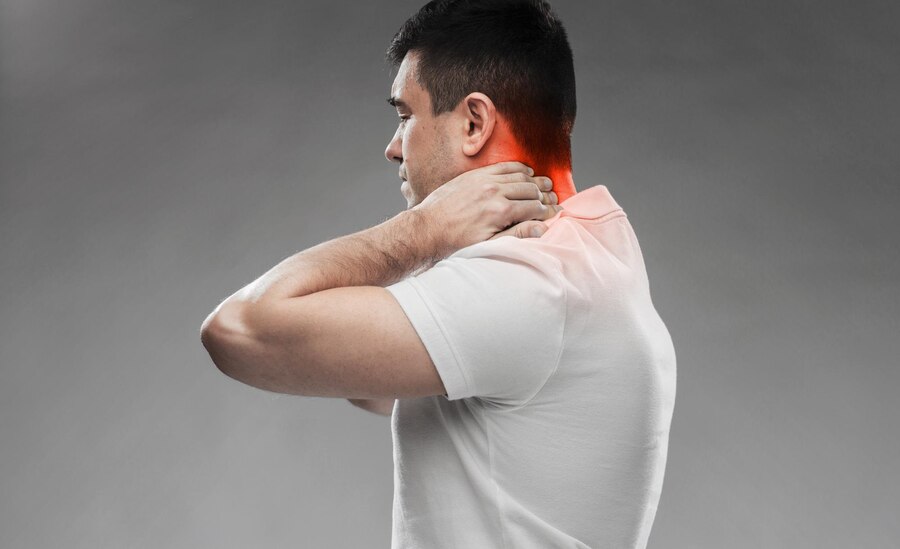In our digital age, where smartphones, laptops, and other electronic devices have become integral parts of our daily lives, a new health concern has emerged – Turtle Neck Syndrome. Also known as “text neck” or “forward head posture,” this condition is characterized by the excessive forward bending of the neck, often accompanied by various symptoms. In this article, we will explore the causes, signs, and treatment choices for Turtle Neck Syndrome.
Causes
The primary cause of Turtle Neck Syndrome is the prolonged and repeated forward positioning of the head and neck while using electronic devices. With the prevalence of smartphones and the increasing amount of time spent on computers, many individuals unconsciously adopt a forward head posture. This constant strain on the neck can lead to muscle imbalances and structural changes over time.
Prolonged Device Use: One of the major contributors to Turtle Neck Syndrome is the extended use of smartphones and other handheld devices. People tend to bend their necks forward while texting, browsing, or gaming, putting excessive pressure on the cervical spine.
Poor Ergonomics: Inadequate ergonomics at workstations can also contribute to the development of Turtle Neck Syndrome. Incorrect monitor height, chair adjustment, and desk alignment can lead to poor posture, causing strain on the neck muscles and ligaments.
Sedentary Lifestyle: Lack of physical activity and a sedentary lifestyle can weaken the muscles that support the neck. Weak muscles are more prone to fatigue and strain, making it easier for the head to shift forward and contribute to Turtle Neck Syndrome.
Signs and Symptoms
Identifying Turtle Neck Syndrome is crucial for early intervention and prevention of further complications. The signs and symptoms may vary in severity, but common indicators include.
Neck Pain: Persistent pain or discomfort in the neck is a hallmark symptom of Turtle Neck Syndrome. The pain is often located in the cervical spine and may radiate to the shoulders and upper back.
Headaches: Forward head posture can cause tension headaches due to increased strain on the neck and shoulder muscles. Recurrent headaches may be a sign of chronic Turtle Neck Syndrome.
Shoulder and Upper Back Pain: As the neck leans forward, it puts additional stress on the shoulder and upper back muscles, leading to pain and discomfort in these areas.
Reduced Range of Motion: Individuals with Turtle Neck Syndrome may experience a limited range of motion in the neck. This can affect daily activities such as turning the head, looking up or down, and rotating the neck.
Numbness and Tingling: Prolonged compression of nerves in the neck can result in numbness and tingling sensations in the arms and hands.
Treatment Choices
Addressing Turtle Neck Syndrome involves a multifaceted approach, combining lifestyle modifications, physical therapy, and, in some cases, medical interventions. Here are several treatment choices that individuals with Turtle Neck Syndrome can explore.
Posture Correction Exercises: Physical therapy exercises aimed at strengthening the muscles in the neck, shoulders, and upper back can help correct forward head posture. These exercises focus on improving posture and restoring the natural alignment of the spine.
Ergonomic Adjustments: Ensuring proper ergonomics at workstations is crucial in preventing and managing Turtle Neck Syndrom’e. This includes adjusting chair height, monitor position, and desk setup to promote a neutral spine alignment.
Stretching and Flexibility Exercises: Incorporating regular stretching exercises for the neck, shoulders, and upper back can help alleviate muscle tension and improve flexibility. Stretching can counteract the effects of prolonged sitting and device use.
Mindful Device Use: Being conscious of device use and adopting healthier habits can prevent the progression of Turtle Neck Syndrome. Implementing strategies such as taking breaks, holding devices at eye level, and practicing good posture can make a significant difference.
Pain Management Techniques: Over-the-counter pain relievers, topical analgesics, and hot/cold therapy can provide temporary relief from pain associated with Turtle Neck Syndrom’e. However, these measures should be used under the guidance of a healthcare professional.
Chiropractic Care: Chiropractic adjustments can be beneficial in realigning the spine and relieving pressure on the nerves. A chiropractor can assess the individual’s posture and spine alignment, providing targeted adjustments to improve overall musculoskeletal health.
Braces and Supports: In some cases, wearing braces or supportive devices may be recommended to help maintain proper neck alignment. These aids can provide additional support and reduce strain on the neck muscles.
Conclusion
Turtle Neck Syndrom’e is a modern-day health concern that affects individuals of all ages due to the prevalent use of electronic devices. Recognizing the causes, signs, and treatment choices is crucial for preventing the progression of this condition and maintaining musculoskeletal health. By incorporating lifestyle modifications, practicing good posture, and seeking appropriate medical guidance, individuals can take proactive steps to address Turtle Neck Syndrom’e and mitigate its impact on their overall well-being.







